


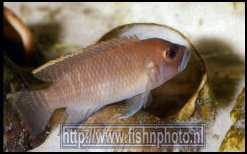
![]() Neolamprologus
brevis met stripe pattern
Neolamprologus
brevis met stripe pattern
![]() Neolamprilogus boulengeri
Neolamprilogus boulengeri
Neolamprologus"Magarae"
![]()
Neolamprilogus hecqui![]()
Neolamprologus brevis ![]()
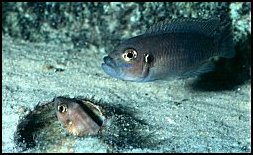
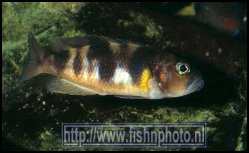
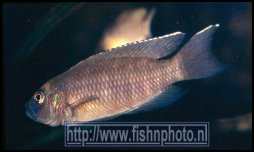
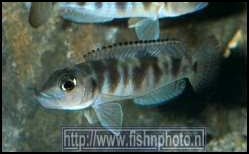
   | ||
| Facultative
shell dwellers | ||
 |
|
|
|
|
|
|
|
With a certain group of this shell dwellers under the influence of the small housing has the number of their dorsal vertebras reduced themselves. That has as a consequence that they have a shape a little shorter, which probably makes life in a snail shell a little more convenient. Neolamprologus brevis (BOULENGER, 1889) probably is the most well known of them (brevis = short). There are a number of variants of this species bound to the location. The variant pictured above with the splendid striper pattern and the form "Magarae" that is characterized by the lyre-shaped tail fin and a bright yellow stain above and behind the eye. Detail with this form is that in general the female and the male as well live in one and the same snail shell. The female totally according her size of 4 CMS at the bottom and the male forms with his format about a cm larger as it were the closing entry. In the aquarium it is well to be seen how a female always dwelling in the direct neigbourhood of her shell, when the male permits himself trips a little farther. At danger she is also the first who ducks, followed by the male who has to come from farther away. |
A second
group consists of Neolamprologus boulengeri,
Neolamprologus hecqui and Neolamprologus meelii (there is
no picture) For the reproduction they also relay on snail shells. The young stay
for a longer time in the snail shell. The three species resemble each other very
strong. N. boulegeri and N. heckui both have two rows of 9 dark
stains that in relation to each other have been shifted a little. N. hecqui
distinguishes herself from the other two by the clear warm-orange colors in the
dorsal fin and the anal fin as well. It becomes more difficult to distinguish
N. hecqui from N. meelii; especially when one cares only for one
species. The pattern of N. meelii consists of only one row of 9 lateral
stains.
The female of the three species have the same pattern, that perhaps is a little
stronger at the males. The only sexual difference consists of a evident difference
in size. The male will grow until twice the size of the females that are full-grown
at 4 CMS. At danger the females duck into the snail shell while the males, that
absolutely don't fit in the snail shells, will seek shelter in holes and crevices
elsewhere. |